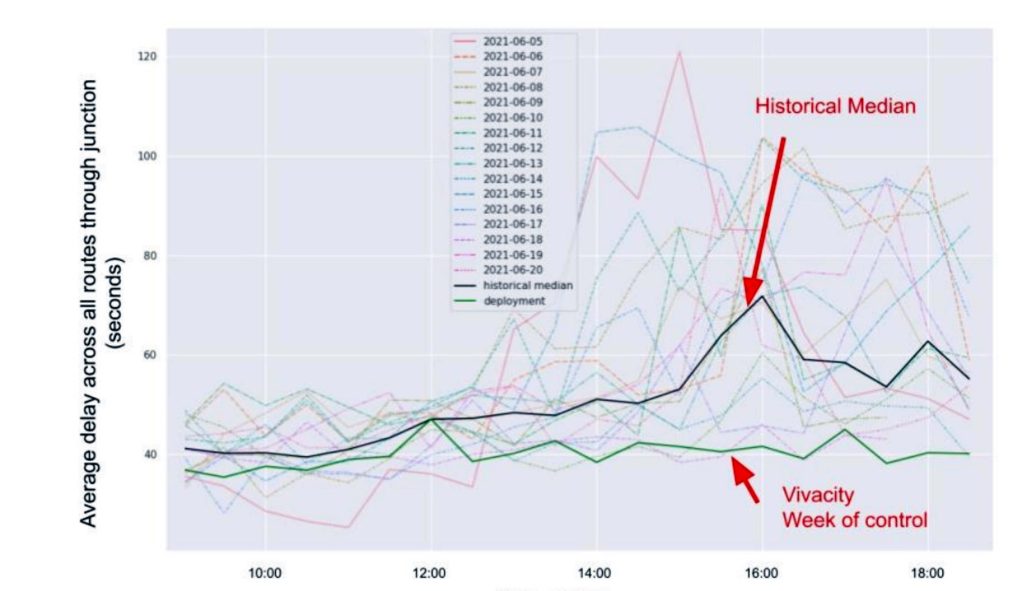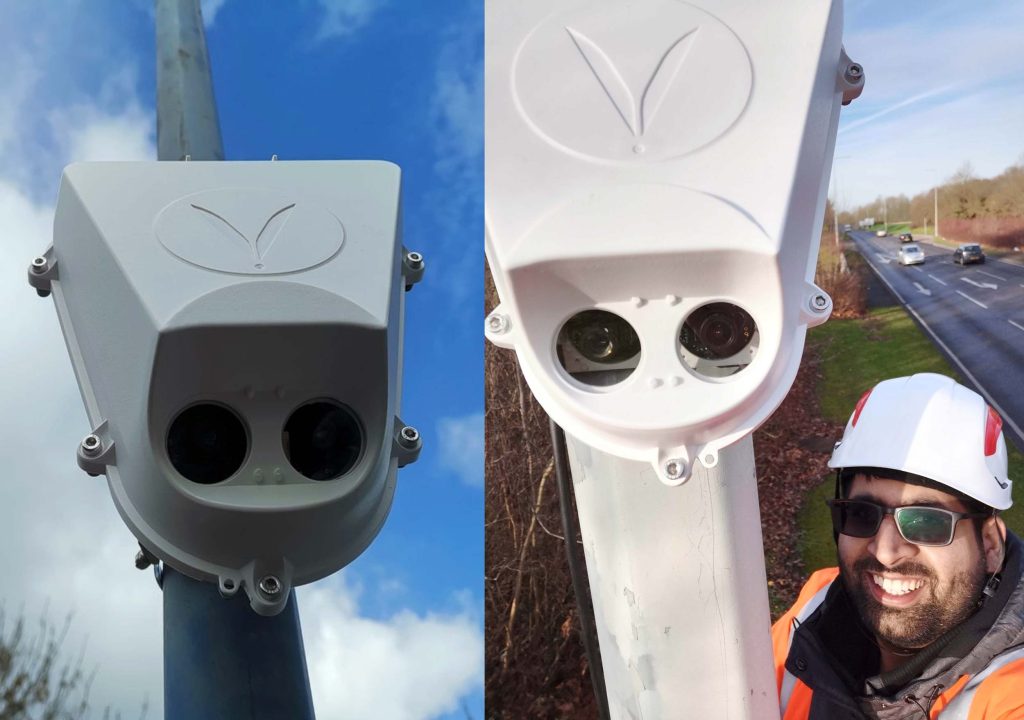A tech business from the UK created by cyclists with the aim of improving safety on the roads is showcasing how clever monitoring of traffic and pedestrian movement in towns and cities has many other associated benefits…
– Interview and story by Rob Arnold
There was a wide range of innovative products on display at the recent Micromobility Expo in Sydney. You could see cargo bikes, e-bikes, e-scooters and all manner of cool vehicles that are part of a transport revolution that is gaining considerable momentum.
It was the first of what the organisers hope will be an annual expo and by next year we can expect to see even more clever inventions that not only help people move around our towns and cities more easily but do so without using an internal combustion engine (ICE).
During my visits to the expo / conference on Friday and Saturday, I learned a lot about new forms of transport and listened to explanations about all kinds of transport options, many of which didn’t exist only a few years ago.
It was an eye-opener on many levels but the booth in the expo that most caught my attention wasn’t about a vehicle, rather it showcased how monitoring movement in towns and cities can improve conditions on road and paths – making them safer and more user friendly, while also reducing carbon emissions with more effective use of the road network.
Introduction to VivaCity
VivaCity Labs didn’t have a flashy display. There was a table, a TV monitor, a couple of chairs… and two blokes talking about a whole lot of technical innovation. And it impressed me immensely after I took the time to listen to what this start-up’s mission is all about.
One of the company’s co-founders, Peter Mildon – who is now the Chief Operating Officer for VivaCity Labs – offered an outline of what he hopes a growing network of cameras/sensors can achieve.
My initial reaction was to ask if the sensors were active in the city of Sydney as, only one weekend prior, I witnessed a very close call that could have had dire consequences.
Walking with my family from Pitt Street Mall towards Circular Quay, the pedestrian light turned green and my 12-year-old impulsively began to cross the road, assuming it was safe to do so. Meanwhile, I looked left to see a car speeding towards him with no hint that it was going to stop… or even slow down.
It provided a fright that I’ll never forget but thankfully quick action – after a considerable scream to alert him to the danger – meant that he avoided any harm. But it could have been a fatal collision. Had he been struck by the car, it wouldn’t have been an accident. It was negligence that created this threatening scenario.
The driver was utterly oblivious to the reality that she’d driven straight through a red light and, as our pulses raced, she continued on her merry way without consequence.
With this near miss in mind, I asked the duo on the VivaCity Labs stand: “Do you have footage from Sydney that we could look at?”
My hope was that we could identify the driver and at least alert her to how close she was to causing a collision.
“No,” replied Peter Mildon. The VivaCity Labs sensor/camera, he went on to explain, is not installed to record videos of traffic incidents, per se. Instead, it’s about monitoring vehicles of all kinds – from scooters to semi-trailers and all else in between – as well as pedestrians and anything else that moves around our cities and towns.
Collecting data on what goes where and when is what VivaCity’s sensors are all about.
When it’s put to good use by clever people with the assistance of AI, then the data becomes extremely useful for myriad applications.
Creating a better flow…
With a basic overview of the product given, it triggered my second question. “Is there any way,” I asked, “that you could sell a few of these sensors to the councils north of Sydney harbour?”
This query was met with an intrigued expression, a shrug of the shoulders… and then, “Yes.”
The aim isn’t to sell sensors to the public, rather hope is that councils buy them and place the sensors on major roads and intersections so that they can interpret the data and make better planning decisions when catering to the kinds of traffic that uses those roads.
My question about north of Sydney harbour, however, relates to the reality that this part of my hometown happens to be my red-light nightmare, time and time and time again… no matter the hour of day or the amount of traffic on the streets.
For some reason, almost every time I approach a set of traffic lights on my morning rides around Sydney’s north, the lights turn red. It has got to the point of making me somewhat paranoid. “I’m sure,” I told Peter while explaining my question, “that there’s a bloke in traffic control central that hates cyclists… or just hates me – and he switches green to red when he sees me approaching.”
He laughed, thankfully. It was meant as a joke (although it does seem true).
This is, however, what VivaCity’s sensors can help with.
Mildon offered an example of an intersection in Manchester where a sensor has been installed. After months of collecting data at all times of the day and night, the clever people at VivaCity Labs configured a different mechanism to allow for traffic flow in response to the information that the sensors had been able to provide.
The result of the changing algorithm for the traffic light sequence was that travel time was cut by around 20 percent!
This is good news for car drivers, truckies, cyclists, pedestrians and… well, everyone who is moving around Manchester, no matter what time of day or night. It is also good news for the environment – as it means more efficient cities, less congestion, less burning of fossil fuels… etc. And, from all that, there are benefits to the wellbeing of people living in Manchester.
Less time spent at traffic lights = less frustration = happier individuals.
It’s a win-win-win scenario. And that’s only the beginning of what can be done, all thanks to the huge swathes of data collected by these sensors.
Data collection: not Big Brother
Helping to achieve a city that moves more efficiently is one thing but if the data also helps town planners understand the habits of those using the town, then the allocation of funding for respective projects also becomes more prudent.
As Mildon explained, it’s much better to have data collected from a year (or more) worth of traffic analysis than one “super Tuesday” spent counting cars, trucks, vans, cyclists, pedestrians, etc at an intersection.
So many things influence how we move around towns and cities, from the impact of weather to major events, to holiday seasons, or even just the change to driving behaviour because parents insist on driving their kids to school… “because it’s just too dangerous on the roads for them to ride” – or some such reasoning.
Monitoring movement in our towns and cities means that it’s possible to create better systems for all kinds of transport options. And eventually the dream scenario is that one of the major excuses for not using a bike in our towns and cities – ie. “I just don’t feel safe on the roads” – can be countered.
Benefits for everyone
If only a small percentage of the population opted for active transport – cycling, walking, or the myriad options that are emerging thanks to micromobility’s influence – then the hassles of excessive traffic would be quelled. And, again, this reduces emissions and improves wellbeing.
There’s nothing wrong with using data for good (not evil) and using observations of how people move to improve the flow.
It’s not about data mining. It’s not about selling your soul for the sake of ‘Likes’. It’s not anything other than considering how things are currently done and using this information to do things better, more efficiently, and perhaps even more actively – ie. with some exercise, and the resultant endorphin rush that can provide.
There are a lot of concepts that come to mind when you start examining the huge amount of data that has already been collected since VivaCity Labs sensors started being activated in 2018. To date there have been over 17 billion vehicle movements tracked… and, as more towns and cities are investing in sensors, that number is now growing at a rate of around a billion movements mapped every three weeks.
There is not facial recognition software that allows someone in master control to steal your identity. Instead, the sensor sees every movement and maps it out in real time and then translates that into data that can make life a little better for everyone.
There’s a lot to consider but watch the interview (above), consider some of the concepts raised and you may realise that there’s nothing wrong with a win-win-win scenario for modern towns and cities.
– By Rob Arnold
More from RIDE Media on Instagram, Twitter, Facebook and YouTube.


